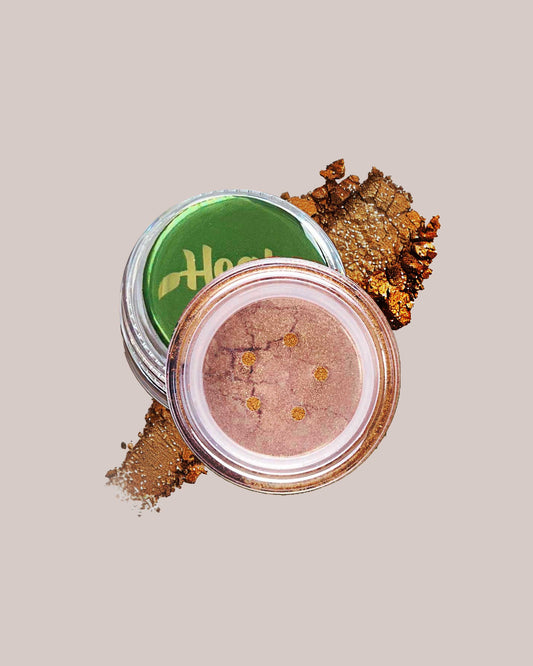In this comprehensive guide, we will explore the various functions of thioredoxin, its regulation, and its natural sources. Whether you're an adamant lover of learning, researcher, or simply stumbling upon information about this fascinating molecule, this article will provide you with valuable insights into its importance in biological systems.
Key Takeaways:
- Thioredoxin is a small protein that plays vital roles in cellular processes.
- It functions as a redox regulator, involved in maintaining the balance of cellular oxidation and reduction reactions.
- Thioredoxin is found in both plant and animal systems, highlighting its evolutionary significance.
- The protein is involved in the regulation of the Calvin cycle, a crucial process in photosynthesis.
- Thioredoxin acts as an antioxidant, protecting cells from oxidative damage caused by reactive oxygen species (ROS).
What is the Function of Thioredoxin?
Thioredoxin plays a crucial role in a wide range of cellular processes, contributing to the regulation and maintenance of various biochemical reactions. One of its key functions is its involvement in redox signaling, which is essential for maintaining cellular homeostasis and ensuring proper cellular function.
Through its active site, thioredoxin acts as a reducing agent, facilitating the transfer of electrons between molecules, proteins, and enzymes. This redox activity enables thioredoxin to regulate protein disulfide bonds, which are critical for protein folding, stability, and function.
Furthermore, thioredoxin functions as a cofactor for numerous enzymes involved in essential cellular processes. It participates in DNA synthesis, the synthesis of ribonucleotides, and the repair of damaged DNA, ensuring the accurate replication and repair of genetic material.
Additionally, thioredoxin is involved in the maintenance of cellular antioxidant defense mechanisms. It assists in the scavenging of reactive oxygen species (ROS), which are harmful byproducts of cellular metabolism. By reducing the levels of ROS, thioredoxin helps protect cells from oxidative damage and maintains cellular viability.
In summary, the function of thioredoxin is multifaceted, encompassing its role in redox signaling, regulation of protein disulfide bonds, facilitation of enzymatic reactions, and maintenance of cellular antioxidant defenses. Its impact on various biochemical processes highlights the importance of thioredoxin in maintaining proper cellular function and overall organismal health.
Where is Thioredoxin Found?
In our exploration of thioredoxin, it is crucial to understand its natural sources. Thioredoxin is commonly found in both plant and animal systems, playing essential roles in various biological processes. Let's delve into the details of where thioredoxin can be found in nature.

How Does Thioredoxin Regulate the Calvin Cycle?
In photosynthesis, the Calvin cycle plays a crucial role in converting carbon dioxide into glucose, providing energy for plant growth and development. Thioredoxin, a small protein, is responsible for controlling and regulating the activity of enzymes involved in the Calvin cycle.
Thioredoxin acts as a redox regulator, allowing the Calvin cycle to proceed optimally. It achieves this control by modulating the redox state of specific cysteine residues on key enzymes, such as ribulose-1,5-bisphosphate carboxylase/oxygenase (Rubisco) and phosphoribulokinase.
Rubisco, the enzyme responsible for capturing carbon dioxide, is activated by thioredoxin through the reduction of its catalytic site. This reduction enables Rubisco to efficiently convert carbon dioxide into organic carbon compounds during the Calvin cycle.
Furthermore, thioredoxin interacts with phosphoribulokinase, an enzyme crucial for supplying the Calvin cycle with ATP. By reducing specific cysteine residues on phosphoribulokinase, thioredoxin enhances the enzyme's activity and ensures an adequate supply of ATP during photosynthesis.
Overall, thioredoxin plays an essential role in fine-tuning the Calvin cycle by regulating the activity of enzymes involved in this vital process. Its redox-regulatory function ensures the smooth progression of photosynthesis, enabling plants to efficiently convert sunlight into chemical energy.
What is the Mechanism of Thioredoxin Antioxidant?
In the world of cellular processes, thioredoxin plays a crucial role as an antioxidant. Through its unique mechanism, thioredoxin acts as a defender against oxidative damage by scavenging reactive oxygen species (ROS) that can wreak havoc on cells.
Thioredoxin achieves its antioxidant effect by utilizing its active site, which contains a pair of cysteine residues. These cysteine residues undergo reversible oxidation and reduction reactions, allowing thioredoxin to cycle between an oxidized form and a reduced form.
When ROS are present in the cell, thioredoxin reacts with them, catalyzing their reduction back to their normal, non-reactive state. This process effectively neutralizes ROS and prevents them from causing oxidative damage to cellular structures, including DNA, proteins, and lipids.
Interestingly, the antioxidant mechanism of thioredoxin extends beyond its direct scavenging of ROS. It also collaborates with other antioxidant enzymes, such as glutathione peroxidase, to maintain an optimal cellular redox balance.
Overall, the mechanism of thioredoxin as an antioxidant is a finely tuned process that safeguards cells from oxidative stress and contributes to their overall health and function.
Explaining Thioredoxin's Role in Cellular Redox Signaling
In the previous sections, we have discussed the functions and regulation of thioredoxin, as well as its natural sources. Now, let us dive deeper into thioredoxin's crucial role in cellular redox signaling pathways.
Thioredoxin plays a pivotal role in maintaining cellular redox balance, which is essential for the proper functioning of various biochemical processes. It acts as a key regulator in redox signaling, enabling cells to respond to changes in their environment and adapt accordingly.
One of the primary functions of thioredoxin in cellular redox signaling is its participation in the regulation of cellular processes. It interacts with a wide range of proteins, including transcription factors, enzymes, and receptors, to modulate their activity through reversible disulfide bond reduction.
Thioredoxin's Role in Signal Transduction
Thioredoxin also plays a crucial role in signal transduction, the process through which cells receive and respond to external signals. It can translocate to the nucleus and interact with transcription factors, influencing gene expression and ultimately impacting cellular behavior.
Furthermore, thioredoxin is involved in the modulation of various signaling pathways that regulate cell growth, proliferation, and apoptosis. By controlling the redox state of critical signaling molecules, thioredoxin influences the activation or inactivation of these pathways, thereby shaping cellular responses.
The Impact of Thioredoxin on Cellular Processes
The impact of thioredoxin on cellular processes extends to multiple aspects of cell physiology. It is involved in the regulation of cell cycle progression, DNA repair mechanisms, and immune responses. By modulating the redox state of target proteins, thioredoxin finely tunes their activity, contributing to the overall homeostasis and health of the cell.
Additionally, thioredoxin has been implicated in the protection against oxidative stress. As an antioxidant, it helps to scavenge harmful reactive oxygen species (ROS) and prevent oxidative damage to cellular components.
In summary, thioredoxin plays a vital role in cellular redox signaling by regulating cellular processes and participating in signal transduction. Its impact extends to various aspects of cell physiology, contributing to the overall functionality and resilience of cells in response to their environment.
Natural Sources of Thioredoxin
Thioredoxin, a vital protein involved in cellular processes and redox signaling, can be found in various natural sources. These sources include both plant-based and animal-based systems, providing a diverse range of options to incorporate thioredoxin into your diet.
Plant Sources:
Plants are rich in thioredoxin, making them an excellent choice for obtaining this essential protein. Here are some natural plant sources:
- Fruits: Kiwi, oranges, apples
- Vegetables: Spinach, broccoli, tomatoes
- Legumes: Lentils, chickpeas, soybeans
- Grains: Oats, quinoa, brown rice
- Nuts and Seeds: Almonds, sunflower seeds, flaxseeds
Animal Sources:
In addition to plants, animal products also contain thioredoxin. Here are some natural sources of thioredoxin from the animal kingdom:
- Lean Meats: Chicken breast, turkey
- Fatty Fish: Salmon, mackerel, trout
- Eggs: Both the egg white and yolk contain thioredoxin
- Dairy Products: Milk, yogurt, cheese
It's important to note that the content of thioredoxin in these sources may vary. However, including a variety of plant-based and animal-based foods in your diet can help ensure an adequate intake of thioredoxin.
In addition to these natural sources, there are also dietary supplements available that contain thioredoxin or provide the necessary precursors for its synthesis. These supplements can be a convenient option for individuals who may have limited dietary access to thioredoxin-rich foods.
Remember, a balanced and varied diet is key to obtaining thioredoxin and other essential nutrients for optimal cellular function and overall health.
Conclusion
To conclude, thioredoxin plays a crucial role in cellular processes, regulating various biochemical reactions and participating in redox signaling pathways. Its functions extend to both plants and animals, making it a versatile and essential protein. Understanding the significance of thioredoxin in cellular processes can provide valuable insights into disease mechanisms and open new opportunities for therapeutic interventions.
Furthermore, exploring the natural sources of thioredoxin reveals its presence in different organisms and highlights its potential benefits for human health. Incorporating thioredoxin-rich foods into our diet or considering thioredoxin-based dietary supplements may contribute to maintaining redox balance and promoting overall well-being.
In summary, thioredoxin is a fascinating protein with diverse functions and natural sources. Unlocking its full potential can lead to advancements in various fields, from medicine to agriculture. As researchers continue to investigate thioredoxin's intricacies, we can anticipate exciting discoveries that further deepen our understanding of cellular processes and their regulation.

















